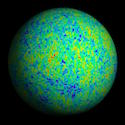|
|
On this page... (hide) 1. effective fsky :1.1 Bicep :
1.2 LiB :
2. Xpol VS Pure VS xQML :2.1 Bicep :
2.2 LiB :
3. Looking for no bias and optimal variance (V2) :
3.1 LiteBIRD
3.2 BICEP
Groupe first bins :
4. Looking for no bias and optimal variance (previous version V1) :
4.1 LiteBIRD
4.2 BICEPGroup first bins :
New results :previous results :
|
|






































































